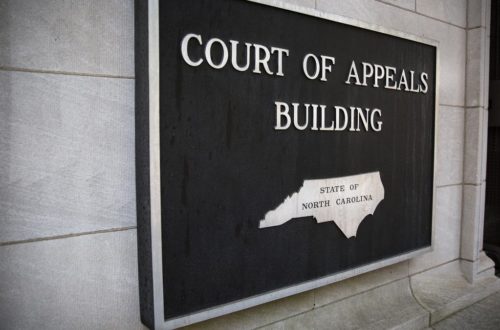Is there a better time than March Madness to talk about basketball?
The Ninth Circuit Court of Appeals recently affirmed the lower court’s dismissal of a claim by photographer Jacobus Rentmeester that sports apparel company Nike infringed a copyright owned by Rentmeester. The Plaintiff created this photograph – Michael Jordan airborne dunking a basketball – for a Life magazine article covering athletes who would soon feature in the 1984 Olympic Games. Jordan, then a student-athlete at the University of North Carolina, would go on to play for the United States Men’s Basketball Team in the Olympics that summer. Nike later utilized a similar photograph of Jordan to create its famous “Jumpman Logo,” which it used on much of its apparel products. The court found that Rentmeester failed to establish that Nike’s image appropriated a sufficient amount of his photograph’s protectable elements to constitute an infringement. Rentmeester appealed the decision to the United States Supreme Court, which declined to hear the case. Rejected!
Elements of a Copyright Infringement Claim
A copyright protects creative expressions of an idea, but not the idea itself. This unclear distinction often gives rise to copyright disputes, and it influenced the court’s decision in this case as well. To establish a valid copyright infringement claim, a plaintiff must prove first that he is the owner of a valid copyright and second that the defendant copied the protectable elements in the copyrighted work.
- The Plaintiff Owns a Valid Copyright in the Disputed Work
The first element requires an original work of authorship created by the plaintiff, fixed in some tangible medium, containing some modicum of creativity. The Ninth Circuit found that Rentmeester met this element: his work was original, fixed in the tangible medium of the photograph, and contained sufficiently creative expressive elements. The Ninth Circuit was satisfied that Rentmeester’s decisions about Jordan’s pose, the camera’s angle and shutter speed, and the use of strobe lights to generate contrast, combined to create sufficiently creative elements of expression.
- The Defendant Copied the Protectable Elements of the Disputed Work
The second element requires proof of copying by the defendant, because a defendant’s independent creation of a similar work is a perfect defense to a claim of infringement. A plaintiff can prove this element either through direct evidence of copying or through a rebuttable presumption that copying occurred, by providing evidence that the defendant had access to the plaintiff’s work and that the defendant’s work is substantially similar to the plaintiff’s. A second question in establishing this element is whether the copying constituted unlawful appropriation of the protected expression in the plaintiff’s work.
For Rentmeester, the court found that Nike had access to Rentmeester’s work – the two parties had previously agreed to a limited licensing deal whereby Rentmeester provided color transparencies of the photograph to Nike. Additionally, the court determined that the similarities between Rentmeester’s photograph and Nike’s “Jumpman” were sufficient to create a rebuttable presumption of copying. However, Rentmeester still needed to demonstrate that the copying was of the expressive elements of his work.
Technical Foul, Plaintiff: Failure to Fully Meet the Second Element
The court found that Rentmeester’s claim failed at this final question – Nike’s “Jumpman Logo” did not copy the expressive elements of Rentmeester’s work. Unlike other media, a photograph cannot readily be dissected into its component elements. Further, each element of a photograph (subject matter, pose, camera angle, lighting, focal length, etc.) is not independently protectable. It is in the selection and arrangement of these individual elements where a photographer’s expressive choices can be protected by copyright.
Here, the court found that Nike’s photographer, who composed the photograph that would later become the model for the “Jumpman Logo,” did not copy the protectable expressive elements of Rentmeester’s photograph. Although Nike did copy the general idea of Rentmeester’s work – an airborne Michael Jordan dunking a basketball – the distinct expressive elements of Nike’s photograph were sufficiently different. The court focused on the differences in the subject’s particular pose, the background setting, and the size of Jordan’s figure in the overall frame of the photograph. The court concluded that because Nike’s photograph did not infringe on Rentmeester’s copyright, the “Jumpman Logo” based on that photograph also did not infringe.
Game, set, match. Oh wait, that’s the wrong sport.
If you have questions regarding a civil litigation or business dispute, please give us a call at (704) 457-1010 to schedule a consultation. For more information regarding our firm, attorneys, and practice areas, please visit https://lindleylawoffice.com/.




